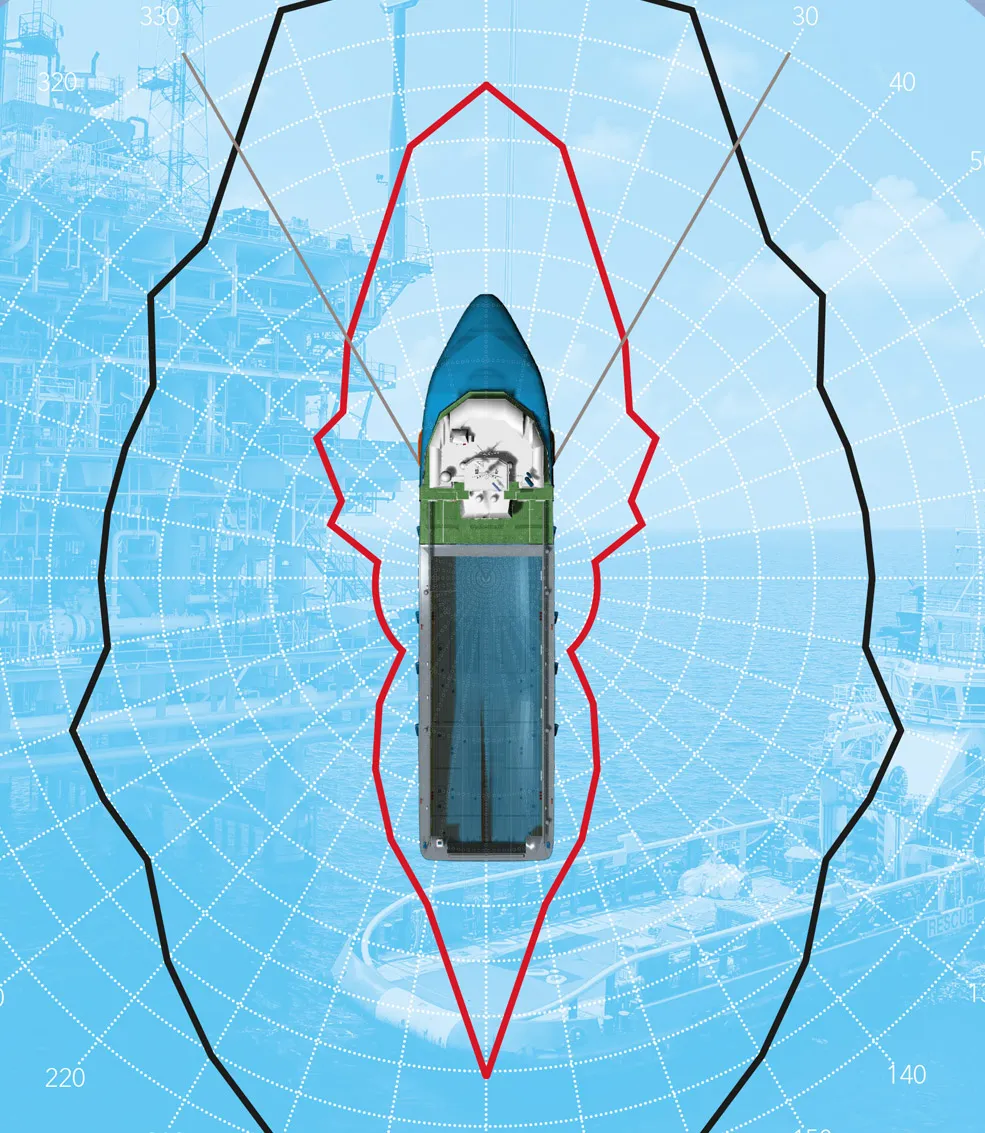DP capability standard - clarity, consistency, comparability
The ability to assess and compare the position-keeping capabilities of a ship equipped with dynamic positioning technology is vital during the planning and design phase and provides valuable operational decision support. The new DNV GL standard ensures verifiable results.
The well-known DNV GL ERN (environmental regularity numbers) concept, established in 1977 together with the first DNV rules for dynamic positioning (DP) systems and replaced in July 2013 by “ERN*”, has served the industry well for many years. However, technical progress and a more extensive use of DP vessels have made it necessary to develop a new standard for assessing the DP station-keeping ability of ships.
In particular, there has been a lack of clear methodical requirements to account for actuator capacity and environmental forces. Industry stakeholders, including yards and designers, have argued that the absence of unified standards has resulted in unfair competition; and calculation reports have been of rather limited value for vessel comparison when different input data and calculation methods were used, and results were hard to verify.
These factors prompted the decision at DNV GL to create a new, open industry standard for assessing the position-keeping ability of vessels to provide better conditions for risk control, a level playing field for competition, and a verifiable data basis for designing and comparing vessels. The standard development project was launched in January 2013 and involved close to 20 companies from Norway, the Netherlands and the UK. In the spring of 2016 the results of this joint effort were sent out to a wider industry audience for an “external hearing”, and the new DP capability standard was released in July 2016.

Three different capability levels
Standard DNVGL-ST-0111 – Assessment of Station Keeping Capability of Dynamic Positioning Vessels defines clear and consistent methodical requirements for DP station-keeping capability assessments, the documentation of the calculations and the presentation and verifiability of the results. It addresses both the intact vessel condition and the worst-case single failure conditions corresponding to the vessel’s Dynamic Positioning class notation.
The standard defines three different DP capability levels, each requiring a specific assessment method. The DP capability calculations use the Beaufort wind scale as well as significant wave height, wave period and current speed data as input. DP capability plots are generated for each level, and the results of the assessment are expressed in a DP capability number with the format DP Capability-LX (A, B, C, D).
The DP capability number indicates that the position-keeping ability of the respective vessel can be maintained under the conditions defined for the respective capability level and all conditions below, but not under the environmental conditions specified for the next higher DP capability number. In addition the standard defines two DP capability assessment levels allowing the inclusion of site-specific environmental data and external forces: Level 2-Site and 3-Site (refer to table at the end). The additional site-specific levels are provided for cases where it is desirable to include site-related environmental and other special operational data which differ from the data specified for the relevant DP capability level. Since these calculations are not based on the Beaufort environment the result is not represented in the form of a DP capability number but as a plot indicating the relevant wind speed limits for the given conditions.
In addition to calculation methods, the standard specifies documentation and reporting as well as verification requirements.
Level 1, which will replace the ERN* concept in the DNV GL rules, gives a more comprehensive picture of the station-keeping capability of a vessel than the legacy standard by accounting for environmental forces acting from all directions. The calculation method is based on a quasi-static balance of mean forces and the formulas were derived from extensive literature surveys, a large database of advanced computational fluid dynamics (CFD) simulations, and expert knowledge provided by the industry group. Level 2 offers enhanced methods to compute environmental loads and actuator forces, while Level 3 includes the effects of dynamics on DP performance, especially vessel, environmental load, actuator, and DP control system dynamics. Furthermore, the standard introduces a new, extended scale for the assessment results. Each step on the scale represents a significant improvement in DP capability, with the environmental forces typically increasing more than 50 per cent from one step to the next. The Level 1 calculation method is fully prescriptive to ensure consistent evaluation of DP capability for verification and benchmarking purposes.

Online application for easy calculation - DP Capability Level 1
In support of the new standard, DNV GL developed the DP Capability Level 1 application which helps users calculate DP capability numbers for Level 1. The application, which is available free of charge at our customer portal My DNV GL, assists users in entering all the required information and returns a visual representation as well as a report of the Level 1 numbers in near-real time. Users may then request DNV GL approval of the results through this application. Our Marine Cybernetics services also provide a service based on cloud computing to assess the vessel DP capability according to Level 2 and Level 3. In order to further expand our online services, DNV GL will launch an online application for level 2 this autumn.
The new DNV GL DP capability standard provides owners, operators and other stakeholders with reliable DP capability data for purposes such as vessel selection, assessment and comparison, and a uniform basis for verifying the calculated results. It is thus a major achievement in terms of decision support and improved market transparency.
